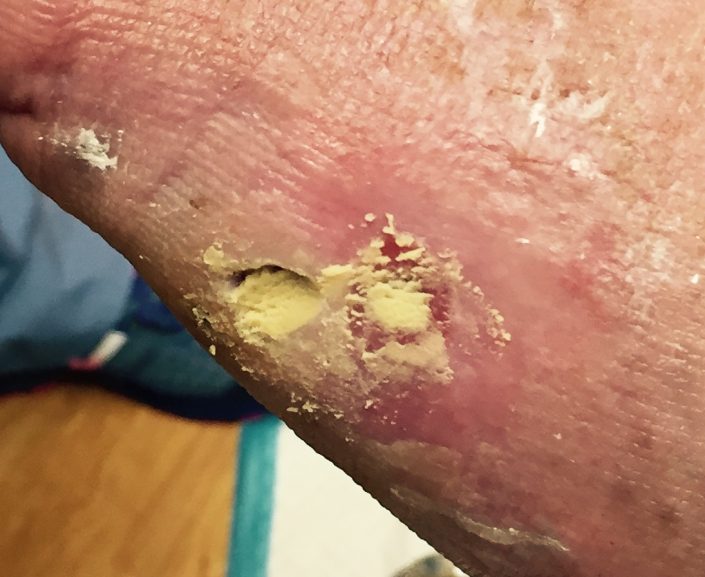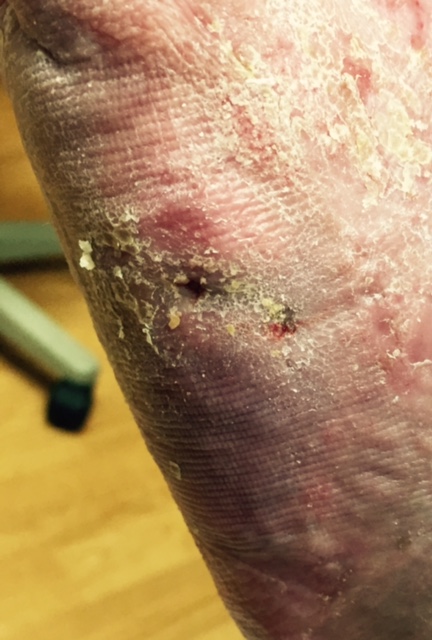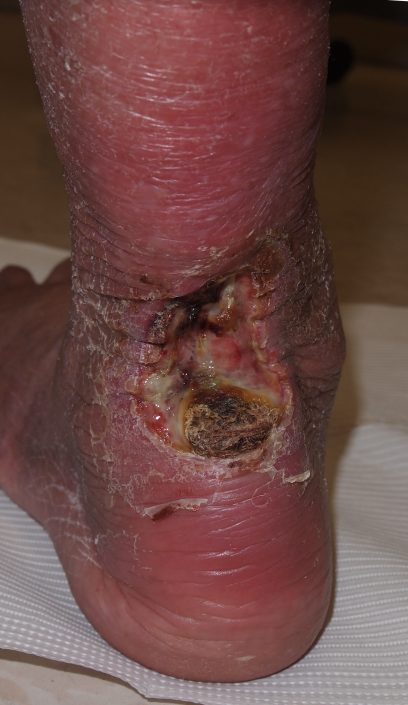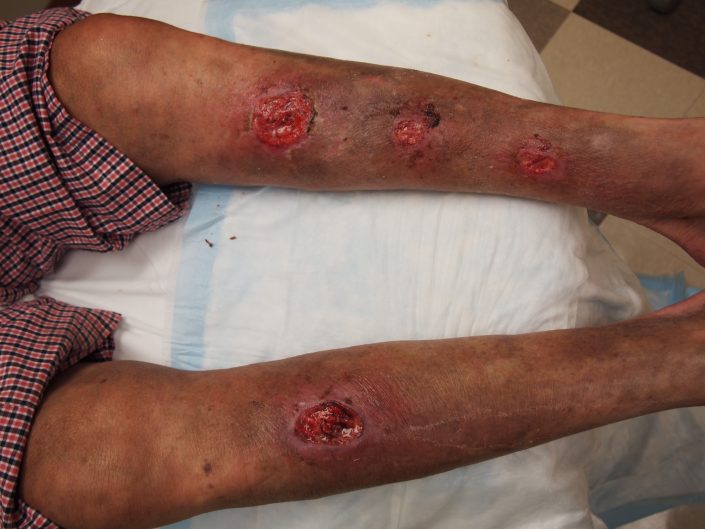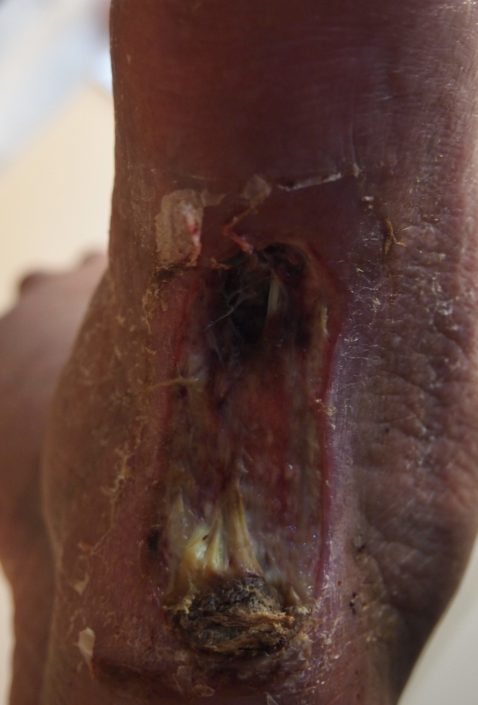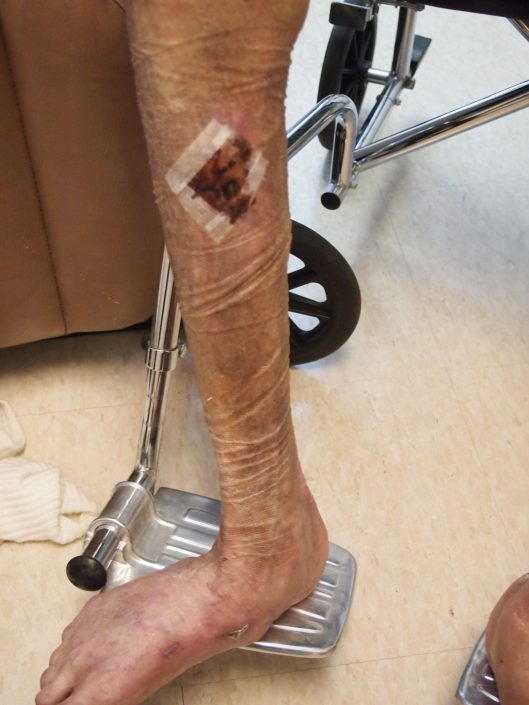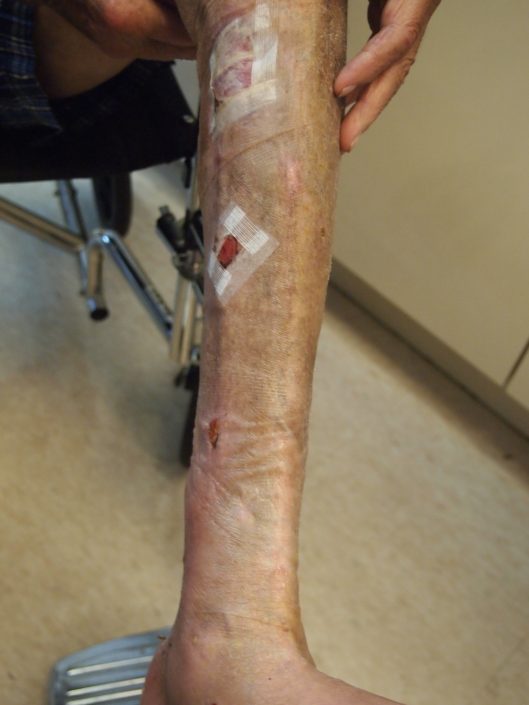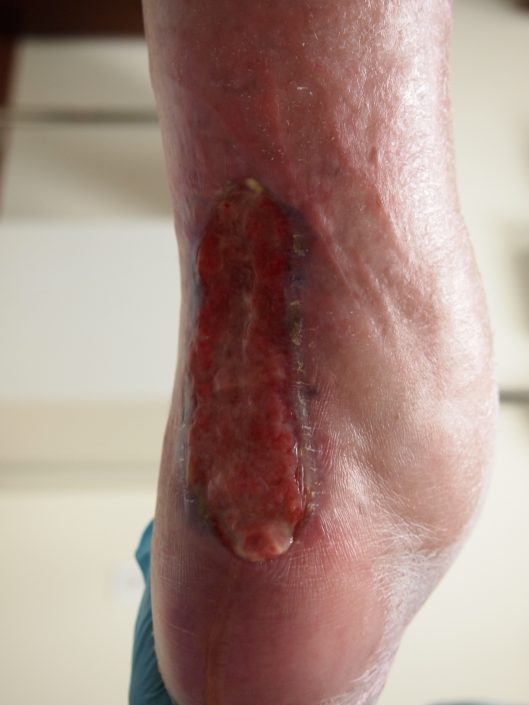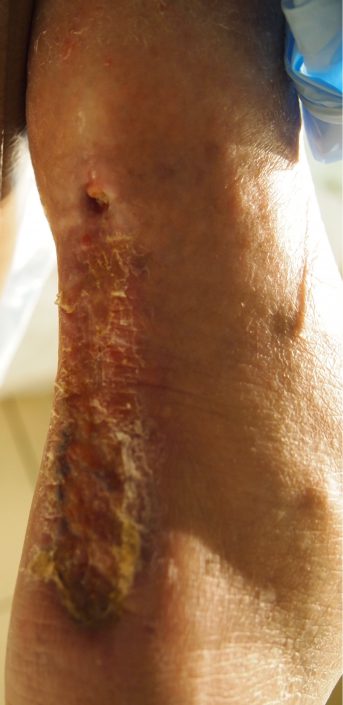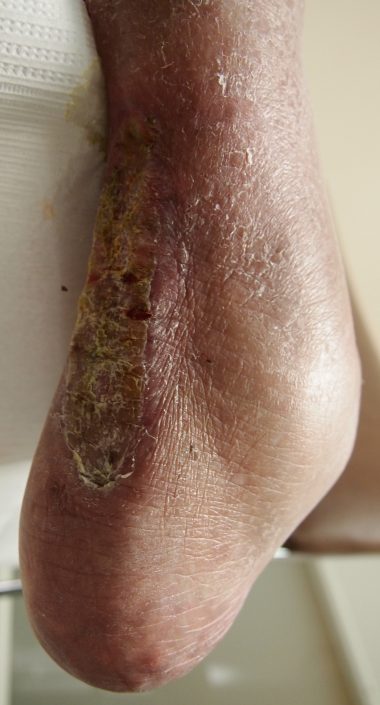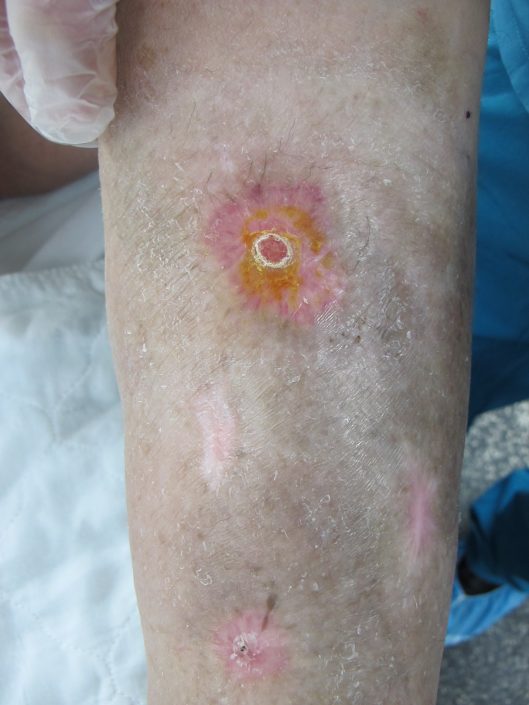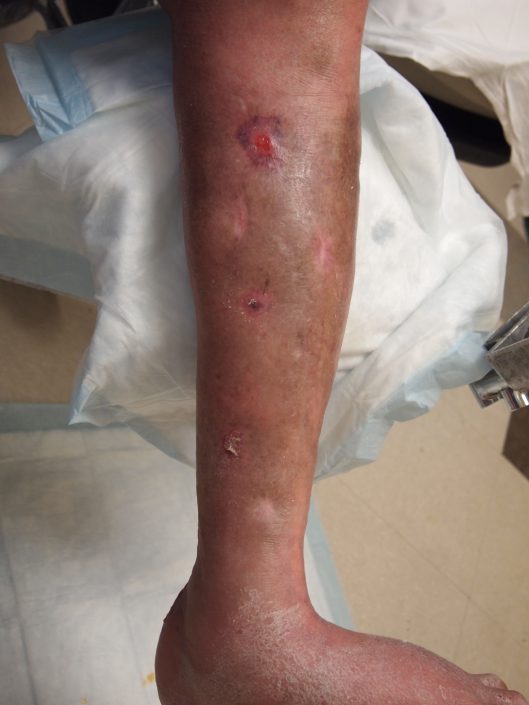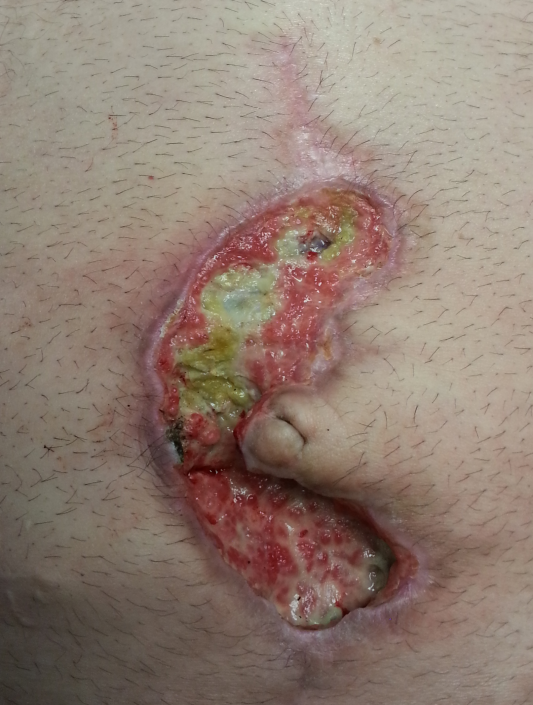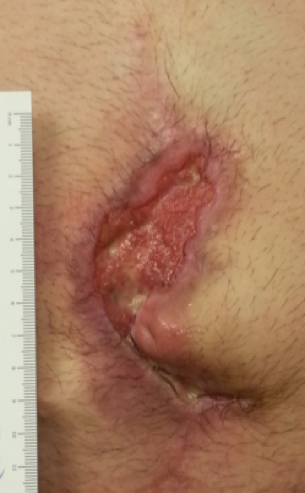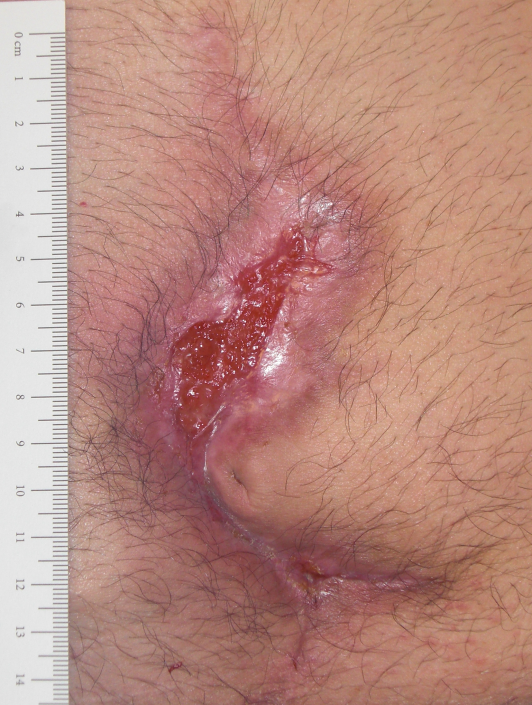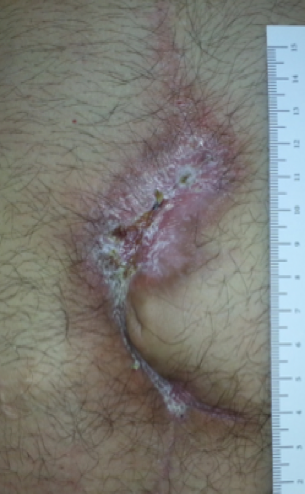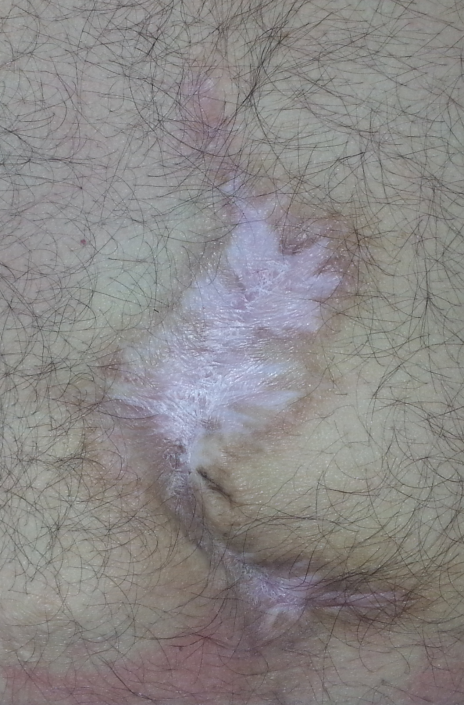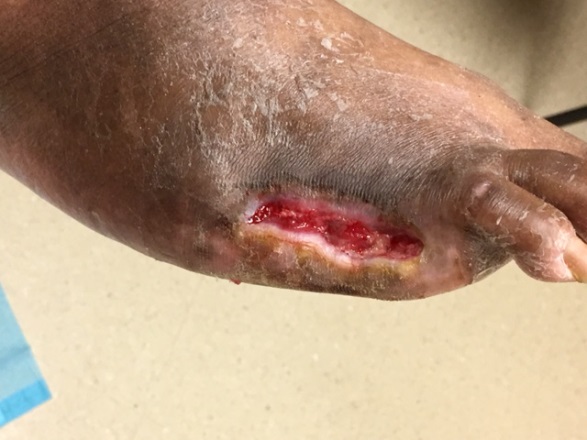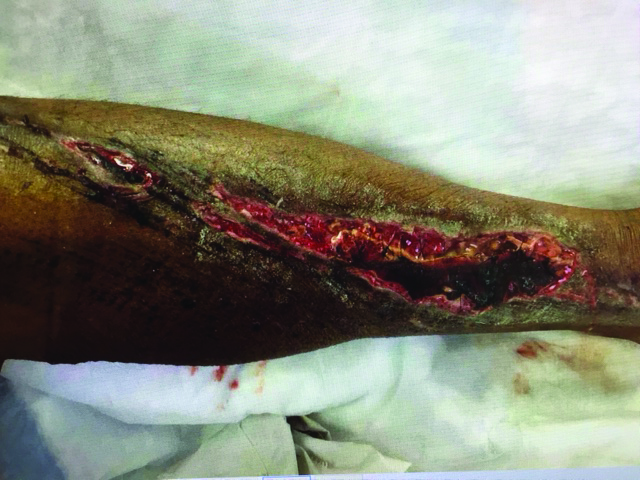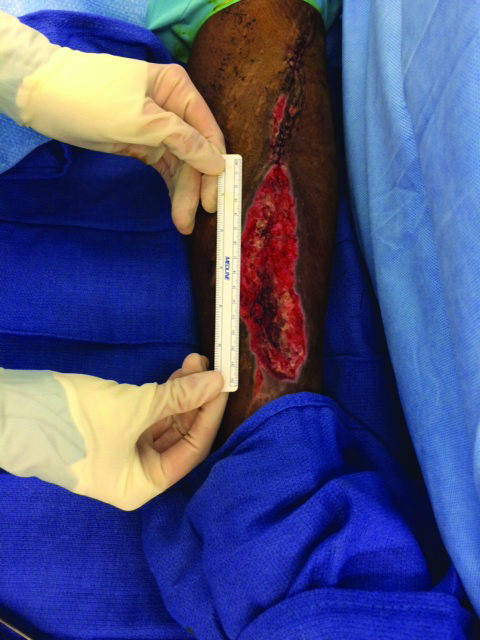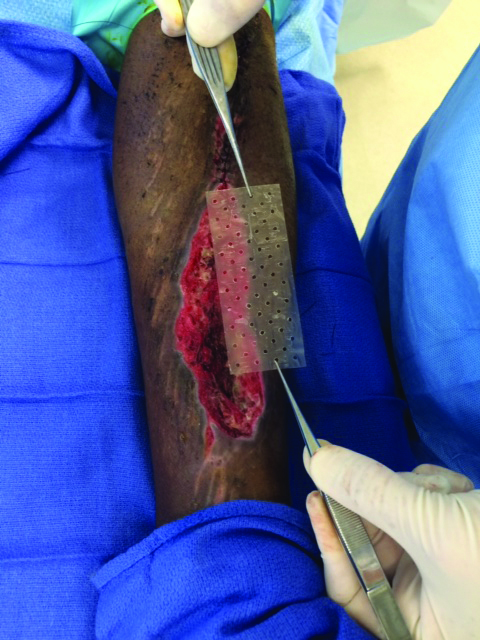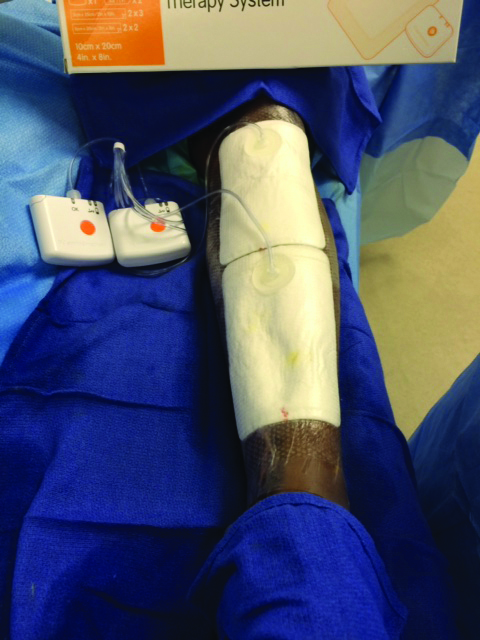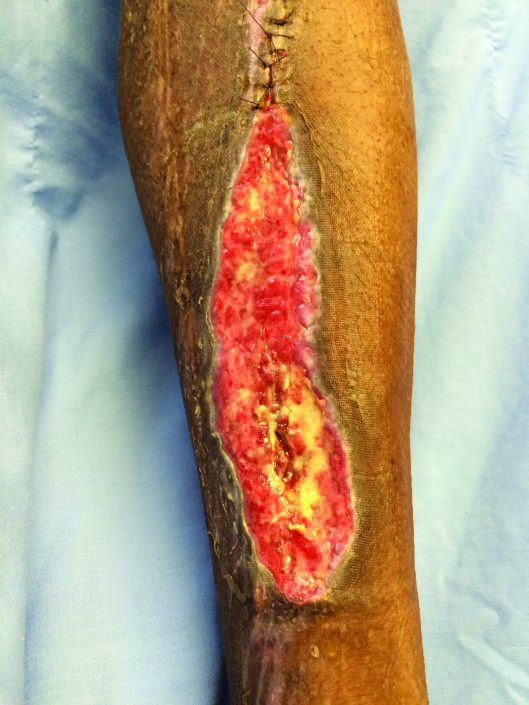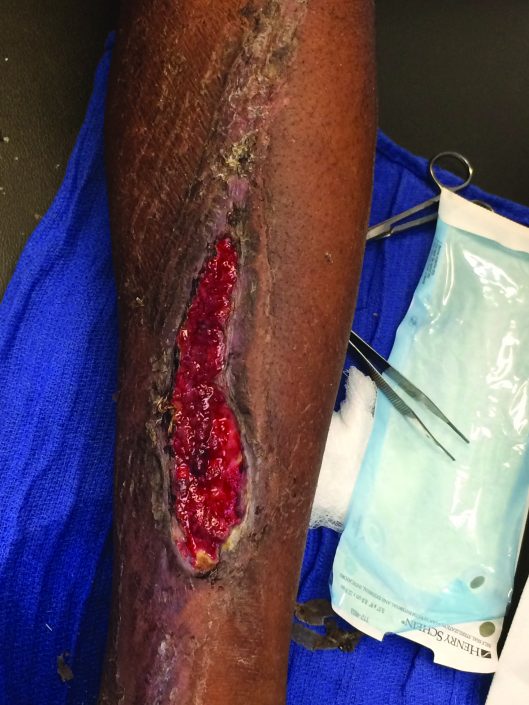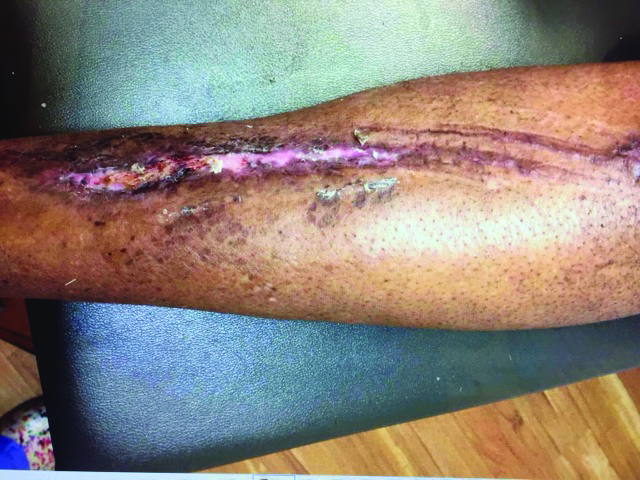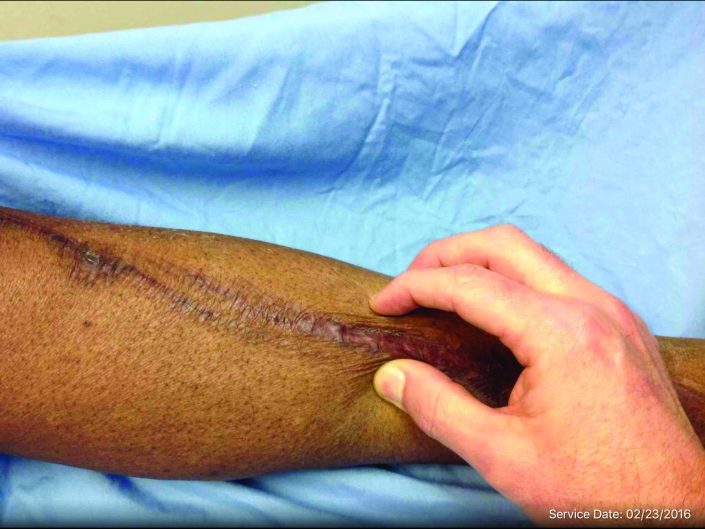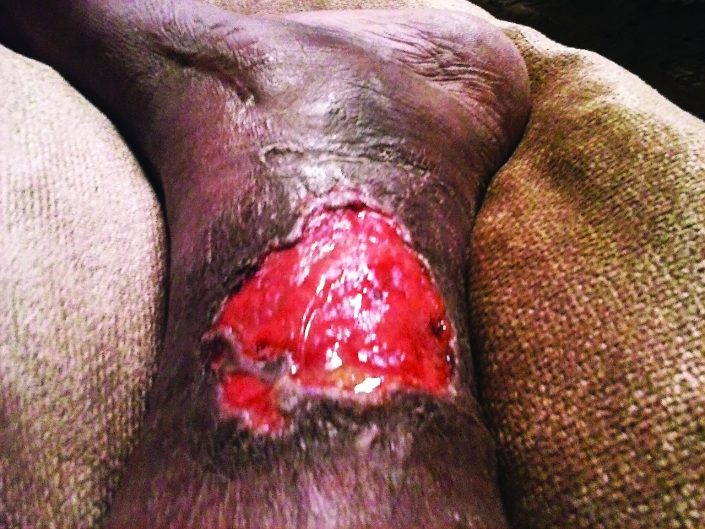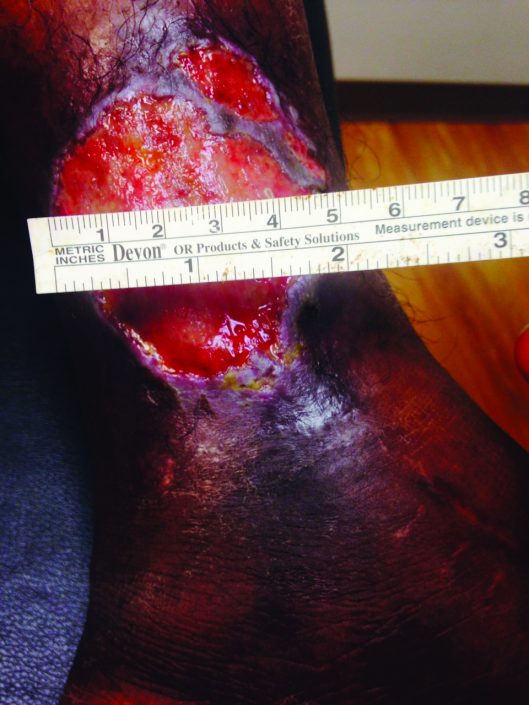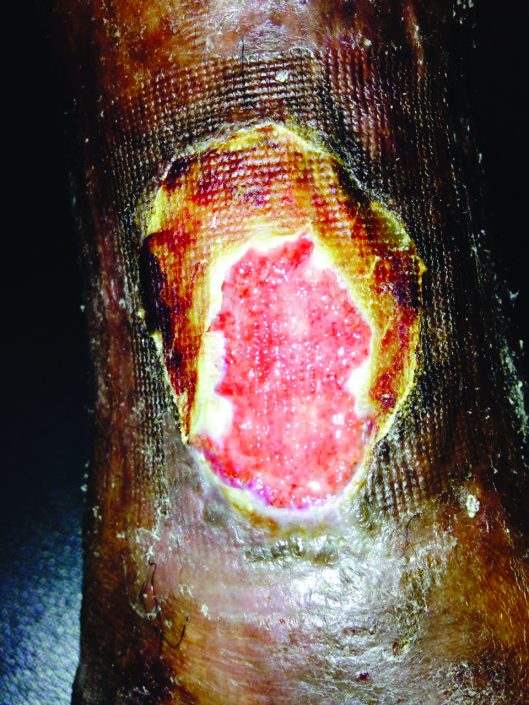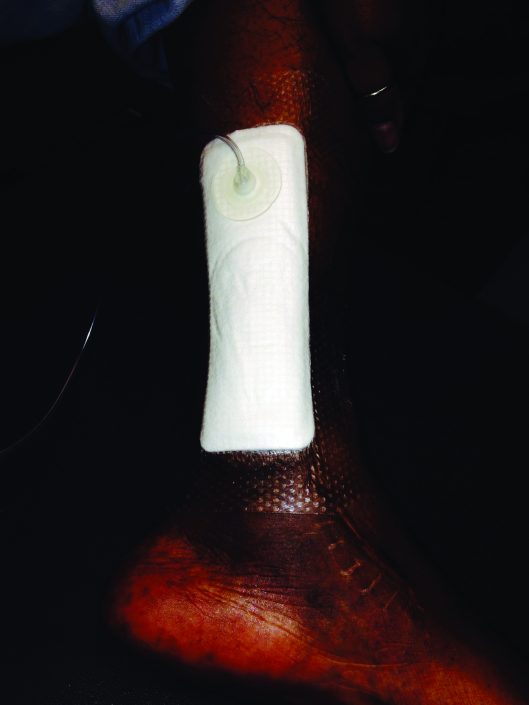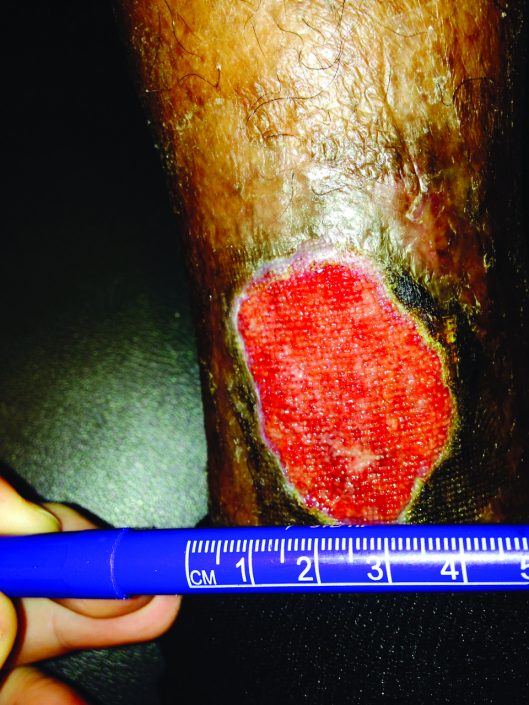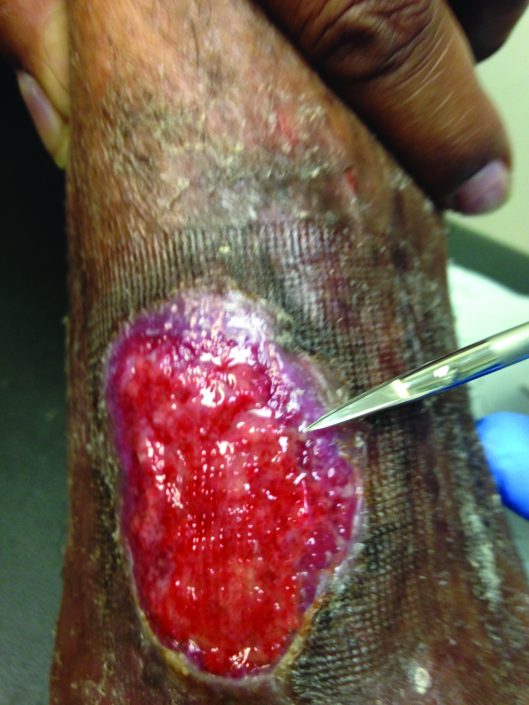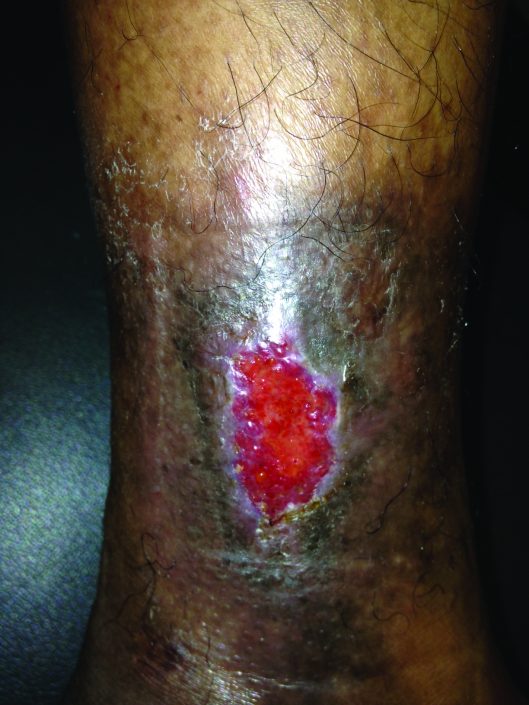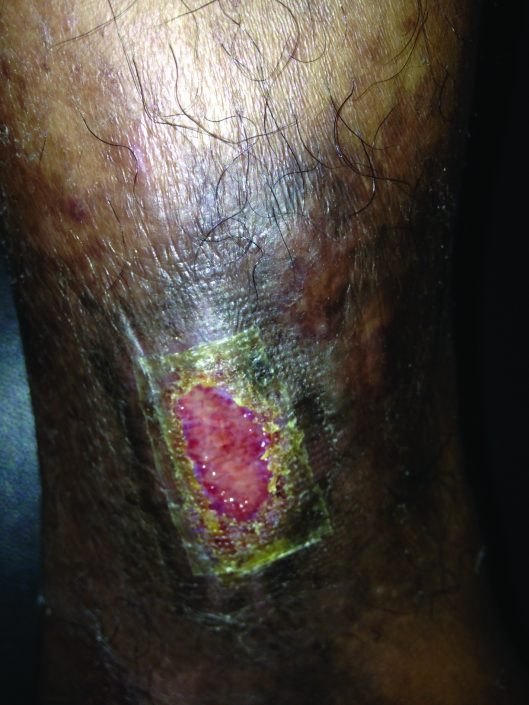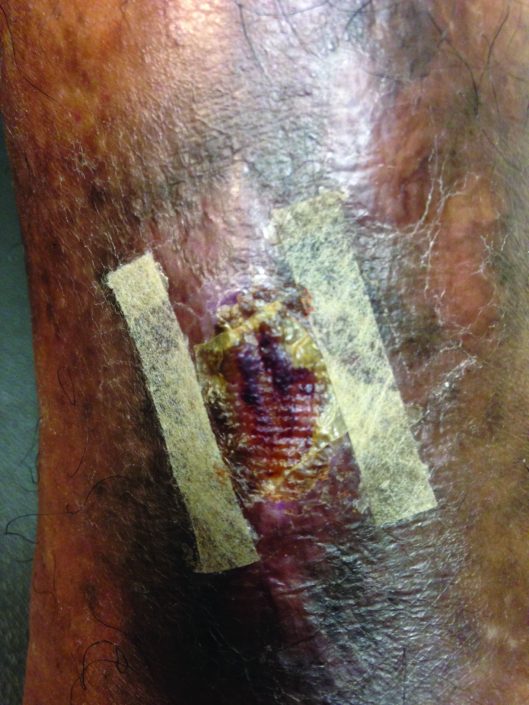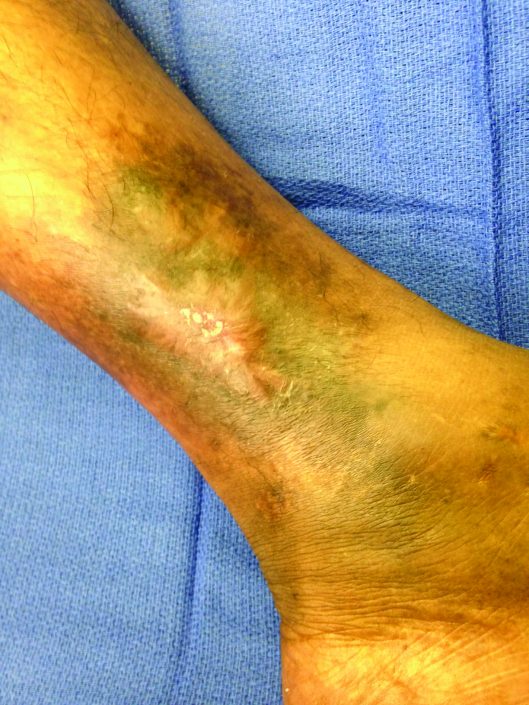Use of EpiFix® Micronized in Small and Tunneling Wounds
The patient presented with two small, but deep, wounds on the lateral aspect of his left foot. The patient has had Venous Leg Ulcers that were healed using EpiFix sheet graft previously, but because of the nature of these wounds, it was decided that packing them with EpiFix Micronized used as a paste would be an appropriate approach.
Challenging Skin Graft: Exposed Achilles Tendon
84 year old male with multiple comorbidities including peripheral vascular disease, pyoderma, and 20 years of steroid use after renal transplant, presents with multiple wounds on legs and a heel wound with an exposed Achilles tendon. Previous attempts at primary closure of the exposed Achilles tendon, as well as use of biologic dressings, failed one year prior to presentation.
Acute Abdominal Wall Dehiscence in Patient with Multiple Comorbidities
A 62 year old overweight male, BMI of 29, diabetic (Type II) with a history of hypertension, myocardial infarction with stent placements, multiple abdominal surgeries, and over 40 years of cigarette smoking, presented for large ventral hernia repair. Pre-operatively, the patient was informed of possible post-op complications due to the comorbidities and agreed to stop smoking prior to surgery.
The Use of EpiFix® in the Treatment of a Diabetic Patient with a Non-healing Surgical Wound from Previous Amputations
We present the case of a 68 year old male diabetic patient with a non-healing surgical wound on the lateral aspect of his right foot from prior amputations. The patient’s past medical history included hypertension, hyperlipidemia, Type 2 diabetes mellitus, and atherosclerotic peripheral vascular disease. Over a 2 month period, the patient underwent amputation of the 5th toe proximal phalanx, a 5th toe transmetatarsal amputation, and a right distal popliteal bypass and 4th digit metatarsal amputation. Treatment with EpiFix® Mesh allograft was initiated to speed up wound healing and to decrease the risk of infection and possible additional amputations.
EpiXL® Enhances Healing in Acute Wound in Patient with Multiple Comorbidities – STSG Avoided
61-year-old female presented to the emergency department one day post 4th of July grilling accident in which the grate from the grill fell on her left lower extremity (LLE). She had extreme pain and difficulty ambulating. It was noted she had full-thickness soft tissue loss associated with multiple soft tissue abrasions, avulsions, and a complex 10 cm x 15 cm laceration. There was exposed tendon, periosteum, and vascular structures. The leg was edematous. She had +1 DP and PT pulses. She also had multiple comorbidities including smoking, hypertension, coronary artery disease, uncontrolled diabetes mellitus, COPD, asthma, peripheral arterial disease, and arthritis.
EpiXL® Enhances Healing in 3 Year Old Chronic Venous Stasis Ulcer Where Other Treatments Have Failed
40-year-old female status post open reduction and internal fixation surgery of an open left ankle fracture four years prior presents with a three year history of a non-healing, painful venous stasis ulcer on the LLE, just proximal to the medial malleolus. The patient had received treatment from multiple healthcare providers and wound care centers prior to being seen by me. After obtaining her healthcare records, it was noted that she had been treated with local wound care, topical enzymatic ointments, recombinant DNA therapy, surgical debridement, hyperbaric oxygen therapy, and myriad of skin substitutes and biologic dressings. Her prior treatments including Santyl®, Regranex®, Apligraf®, Integra®, OASIS®, and PriMatrix®. She complained of intense pain. She was upset and frustrated, as this open wound had interfered with her personal life, and the weekly visits to healthcare providers interfered with her employment. Her prior workup had included rheumatology, infectious diseases, endocrine and nutrition. Her comorbidities included well controlled hypertension and diabetes mellitus. At the initial consultation, the wound size was approximately 5 cm x 5 cm, with a 0.7 cm leading edge; it was painful and exudative.


